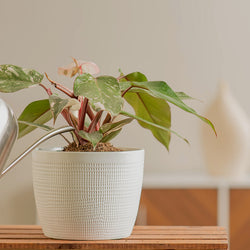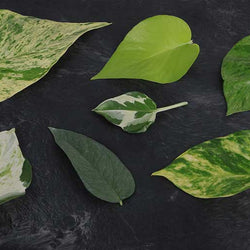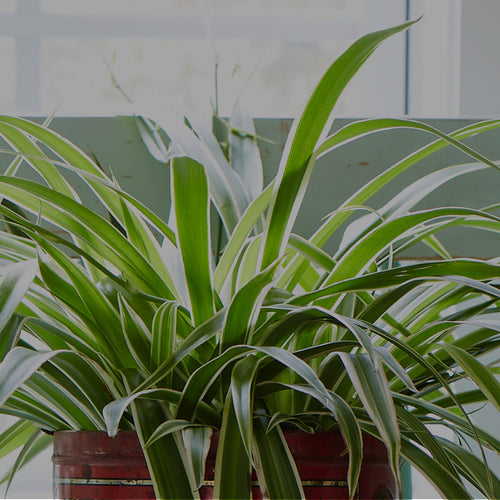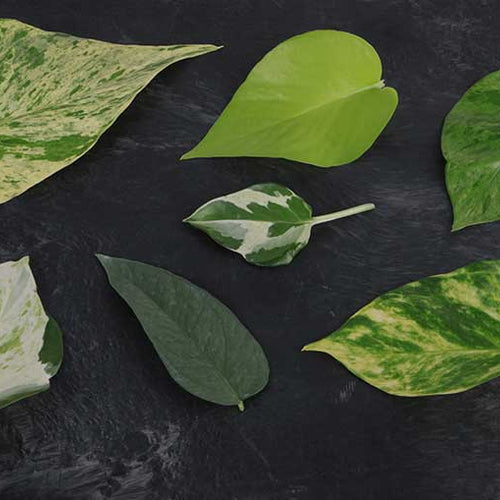What Are Exotic Angel® Plants?
Exotic Angel® is a quality collection of houseplants specially created to be grown inside your home. Most plant species hail from the tropical parts of the globe, so they bring an exotic element to your indoor spaces. The Exotic Angel® collection from Costa Farms offers more than 200 different types of plants which are grown in pristine conditions so they are healthy and ready to spend their lives adorning your home, keeping you company, and spreading joy in your life.
Where to Buy Exotic Angel® Plants
Exotic Angel® Plants can be found in the houseplant section of many garden centers across the country, including Lowe's, The Home Depot, and Walmart, as well as online from retailers such as Amazon and in our own online plant shop.
The Ideal Sizes For Indoor Gardening
Exotic Angel® Plants come in a range of sizes that allow you to use them in home decor in creative ways.
- For tabletops, terrariums, and combination planters, we offer 3.8- and 4.8-inch-wide pots.
- For hanging, we offer 6.6- and 8-inch-wide hanging baskets.
How to Select Plants for Your Home
So how do you choose which houseplants are for you? Use the guide below to help you pick plants for your home.
1. Choose Exotic Angel® Plants for Their Amazing Health Benefits.
Why add plants to your home and office? Houseplants bring the wild world of nature into your interior spaces, surrounding you with beautiful living things. Studies have shown that houseplants make you more healthy. And they make you more mindful. And keeping a houseplant in your bedroom can make you sleep better. Foliage plants also clean the air in your home. And when you bring a houseplant to work, you may see your productivity improve.
2. Choose Exotic Angel® Plants for Their Decorative Characteristics
Stylish and natural, houseplants bring comfy life to your living spaces. No matter what your space size and lighting, you can enjoy a variety of lush beauties—from big-leaf Chinese evergreens (Aglaonemas) to frilly ferns. You can suspend hanging plants, such as wax plants (Hoya), in a window. Or set tall, vertical plants, such as snake plants (Dracaena trifasciata), on the floor.
Exotic Angel® produces indoor plant species for any décor and personality. Discover beautiful houseplant options to dress up a dining room table, add life to a sunroom, display a green sculpture in a living room, and infuse a lush tangle of foliage in a kitchen. Adding instant life and vibrancy to a room is as easy as adding a plant.
3. Choose Exotic Angel® Plants Based on Their Size.
You can add small plants as decorative accents or large plants as sculptural assets. Small plants add pops of life to every room in the house. Little plants can sit happily on a bed stand, living room side table, or on the kitchen counter. Try dragon’s tongue (Hemigraphis) which looks like a little ornamental grass. It has deep green leaves with purple backs It loves humidity, so it’s an ideal choice for bathrooms. Nerve plant (Fittonia) offers colorful foliage in a variety of colors. Rex begonias, offer beautiful, colorful leafs.Larger plants create a bigger presence in your home. Try peace lily (Spathiphyllum) which is available in many sizes. They have huge dark green leaves and are well known for being one of the best air-purifying plants. Another plant with presence is snake plant whose swordlike leaves stand straight up like exclamation points. They are ideal for areas of your home that benefit from a horizontal burst of green. Dieffenbachia is a tropical shrub that looks beautiful in a living room or den.
4. Choose Exotic Angel® Plants for Their Great Looks.
Plants offer a wide variety leafy looks—from lush to minimalist. When you choose the style of décor for your home, there are any number of plants that will enhance the look you want.
Big and Leafy
Add greenery and life to your home (and patio!) with fabulous foliage plants. From small-leafed beauties, such as ivies (Hedera helix) and ferns. Medium-size leafy plants include snake plants and pothos (Epipremnum aureum). And large-leaf plants include peace lilies and Chinese evergreens.
Cool and Colorful
Variegation is the term used to describe coloration in the leaves of a plant. Two-toned leaves create a beautiful focal point in a room. Many plant species have variegated forms, for example, dwarf variegated schefflera, variegated pothos, striped snake plant. Other colorful foliage plants include croton (Codiaeum), earth stars (Cryptanthus), rex begonias, nerve plants, and purple passion plant (Gynura aurantiaca).
Vertical and Statuesque
Plants that grow upright, looking like a piece of sculpture, include ponytail palm (Beaucarnea recurvata), Schefflera, ZZ plant (Zamioculcas zamiifolia), corn plant (Dracaena fragrans 'Massangeana', and yucca cane (Yucca guatemalensis). Although Exotic Angel® plants start out small, over time these vertical beauties will grow taller every year.
Hanging and Cascading
Hanging plants offer a different type of vertical appeal. Unlike floor plants, hanging plants have foliage that can fill a window or cascade over a pillar or plant stand. Hanging species, such as dischidia (below), philodendron, peperomia, or columnea offer beautiful leaves strung on long stems.
5. Choose Exotic Angel® Plants Based on Their Care Requirements.
All house plants need three things to thrive: the right light, the right amount of water, and warm temperatures 60 to 85F (15 to 29C). When your plants are in their happy place, they will reward you with years of beauty and growth. Some houseplants need more attention than others. For example, if you let a moss go dry, it may not survive. Other plants, such as snake plant, can take a lot of neglect.
Decide what kind of plant owner you can be, and choose the species according to your lifestyle. Read more about indoor plant care basics and try these top 10 tips for houseplant care.
Light
Light is vital to plants. Light activates photosynthesis, which is the way plants process light into energy. You’ll see on most plant tags (and in our Exotic Angel® online plant descriptions) three light categories. Many of our plants will grow in multiple types of light. But for some plants, the light is too high or too low. Your space is low light if you can comfortably read a newspaper or magazine throughout the day without having to add more light. High-light spaces make houseplants cast a strong shadow most of the day. Medium light is somewhere between low and high light. And there is one more type of light: artificial. Houseplants don’t have to grow in natural sunlight. Some plants grow well under fluorescent lights.
Water
Like all living things, plants need water. But different species of plants need different amounts of water. Think about how plants grow in their natural surroundings: desert plants are engineered to do without water for long periods of time. And they thrive on minute amounts of rainfall. Compare that to plants that grow in a rain forest who experience continual moisture. Here’s the cool thing: You can raise both desert and rain forest plants in your home, but it makes sense that they don’t need the same amount of water. Knowing how much to water houseplants is easy. Add moisture when the top inch or so of the potting mix feels dry to the touch. Learn more about how to water. If you can’t commit to a watering schedule (no judgment here), choose houseplants labeled as low water. These low-maintenance plants can live through dry periods.
6. How to Pick Healthy Plants
When shopping, assess each plant using these visual tools:
- Look at the leaves. If the foliage is drooping or wilted, avoid buying the plant. If there are brown spots on the tips of the leaves, this could indicate the plant has experienced over- or under-watering. Yellow spotting or entirely yellow leaves can indicate chlorosis, a nutrient deficiency.
- Look at the stem(s). Stems should be firmly rooted in the soil. There should be no signs of mushiness.
- Look at the roots. Is the plant root bound? Plants need to have adequate root systems to grow bigger and take in nutrients. But if plants have been grown in their pots too long, they may be root bound. The signs of a root bound plant are roots pushing up through the soil surface or growing out of the drain holes in the bottom of the pot.
- Look at how the plant sits in the pot. Is the plant leaning to one side? Plants need light and will actually move toward light. This is called etiolation. If plants have been grown too long in inadequate light, it may be difficult to get them to resume their normal shape in the right light.
- Look for signs of pests. Plant pests leave distinguishing marks. If you see sticky residue, webs, or dots on the leaves, the plant may have a pest problem.

















